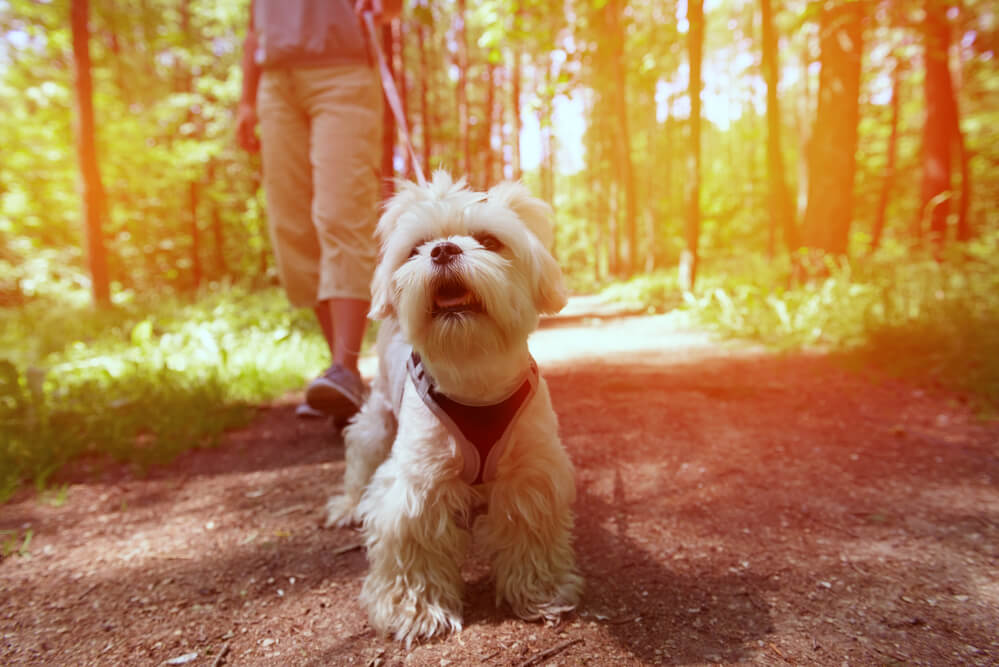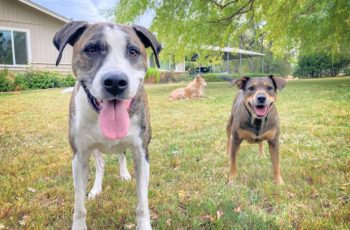Puppies are not born knowing everything, and like human kids, there are basic behaviors they need to be taught, including how to walk properly when out with their pet parents.
While a collar and leash has been the norm for many years an increasing number of pet parents are turning to a dog harness instead.
However, when just purchased and laid out flat, a dog harness can be confusing, leading many pet parents to ask how to put a harness on a puppy.
The basic answer is that most dog harnesses go over the head and around the body, held in place by a set of strong clips. They offer, many feel, more control to the dog walker while not irritating or pulling at the pup’s neck if he needs correction, in the way that some leashes call for. Lots of puppy owners also feel that their dog is more secure, and less likely to break away, if they make use of a harness rather than a traditional leash.
There are a number of different harness styles, and wearing options, to choose from these days, so our basic answer may not suffice, which is why we are going to take a closer look here at not only how to put a harness on a puppy and make the best use of it while it is on but also whether they should be wearing one at all.
Should You Walk a Puppy With a Harness?
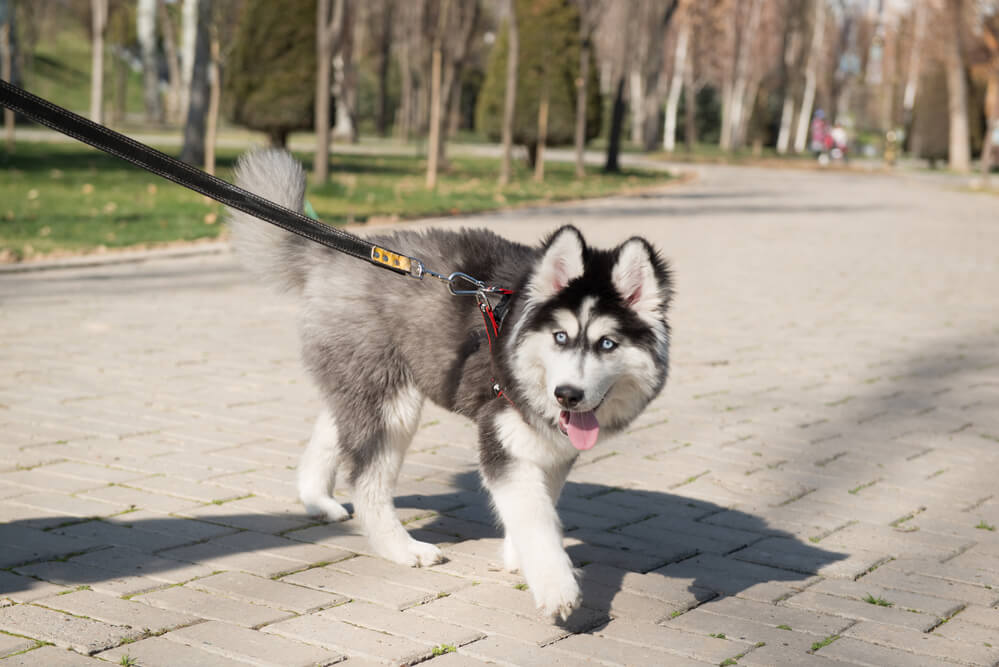
If they have used a traditional leash and collar to walk their dogs in the past, which is the case for many of us, new puppy parents may wonder what advantages, if any, walking their puppy on a harness instead will offer.
Leashes and collars are inexpensive and easy to fit, while harnesses will cost a little more, especially for a higher quality option. Is the extra expense – and what some feel is extra hassle when putting it on their pup – worth it?
There are indeed a number of reasons why it might be a better idea to walk a puppy using a harness, and some of them are so good that they mean that the harness remains a fixture in their dog’s ‘closet’ for the rest of their life. These include the following:
For puppies who haven’t yet learned to walk well on a leash, a dog harness is a useful training tool. A harness will keep her from becoming tangled in the leash and potentially injuring herself.
What is the Best Type of Harness for a Puppy?
As we mentioned, as they have increased in popularity a number of different types of dog harness have become available, and if you have never made use of one before finding the right one can seem like it might be challenging.
The variations between harnesses tends to be in the materials they are made from, where the leash attaches and how they are secured.
Some harnesses, for example, make use of a buckle system to fasten it in the chest area, while others use a wide strap of Velcro instead.
Some have several places the leash can be attached, while others just offer a single spot.
However, there are some things you should look for in a good dog harness that are universal:
Adjustability
The ideal dog harness will be adjustable enough that it can grow with your puppy and still offer a secure fit.
This means you should look for a harness that has adjustable straps and fastenings. While the same harness might not fit a growing puppy for life, it should at least fit for several months!
Chew Resistance
Puppies just learning how to be walked outside will chew at harnesses in the same way they will chew at a standard leash and collar.
Look for strong, chew resistant materials and wide straps, as the latter will also offer extra security while walking and the former will challenge sharp puppy teeth!
Padding
Some dogs, especially smaller ones and those prone to pulling, will often benefit from wearing a harness that has a little more padding, especially in the chest and back areas.
Ease of Use
A harness that is too difficult to put on, or take off, will be frustrating for both pup and pet parent.
Opt for one that calls for as little fuss to put on as possible, one of the reasons we especially like harnesses like this one that feature a wide secure Velcro strap at the neck, as they are easier to get on and off and yet still very secure, as well as very easy to adjust as your puppy grows.
Price
A good quality dog harness should cost you somewhere between $20 and $40.
While the most expensive options will not always be the best – sometimes you are just paying for the name – if one options seems significantly cheaper than most of the others beware, as this is often an indication that the quality is poorer, and they won’t last as long – or offer as much security – as they should.
How To Put on a Puppy Harness Step By Step
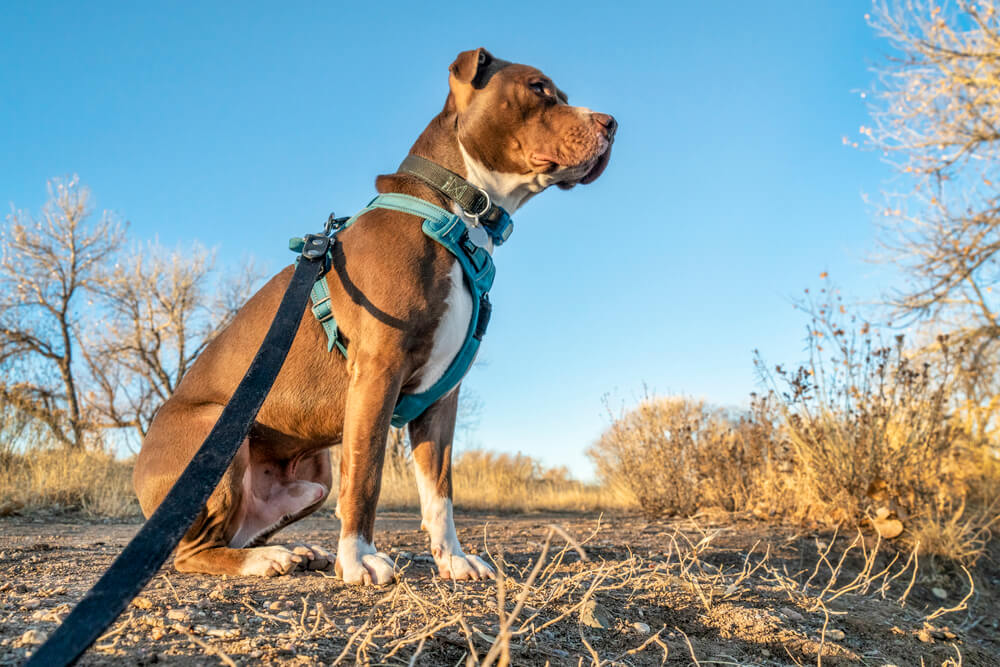
Young pit bull terrier dog in no pull harness sitting during outdoor walk
The ins and outs of putting your chosen harness on your puppy will change depending on the style and brand you choose, but the following step-by-step guide will help you with the basics that apply to a standard dog harness.
However, always make sure you read the specific instructions that come with your dog harness before making use of it for the first time. For instance, a few harnesses slip over the head in one piece, and you may not need to follow all these steps.
1. Getting your pup ready
After getting your dog calm, stand or squat behind her and have her sit or stand still. DO not try to put a harness on a dog while they are on two legs as achieving a good fit will be very hard.
2. Position the harness correctly
Place the harness over your dog’s head. Ensure that the D-ring is on your dog’s back, not underneath her. The wider loop (usually the one with the buckle) is put on first, followed by the narrower loop.
3. Get the first leg in
Put your dog’s leg through the harness’s first leg hole. The leg should now be in the middle of the loops that go around the ribs and around the neck.
4. Get the second leg in
Make sure your dog’s other leg is in the proper leg hole before buckling the harness. You’ll need to adjust and loosen the strap if the buckle doesn’t reach far enough for you to close it.
5. Check for a snug fit
Once the harness is in place, make sure it fits snugly but that you can still easily slip two fingers under any of the straps.
How To Train a Puppy To Walk With a Harness?
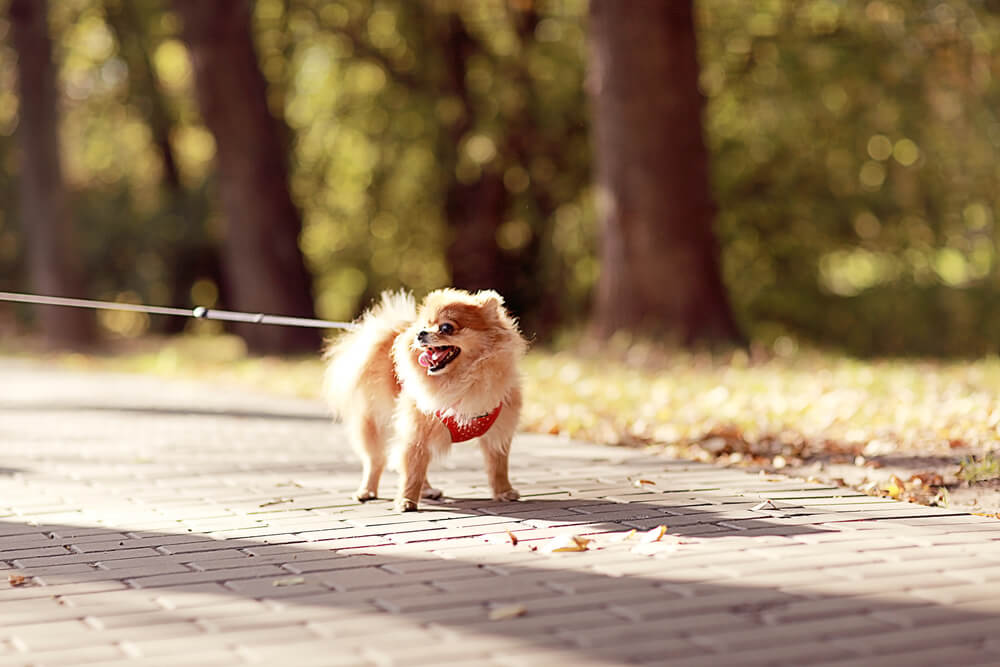
A young Spitz dog walking with a padded harness
As we mentioned right at the start of this piece, a puppy needs to be taught how to walk with you properly, and a harness, while often an easier way to do so, is not magic, and you will still need to train your puppy to walk with it.

